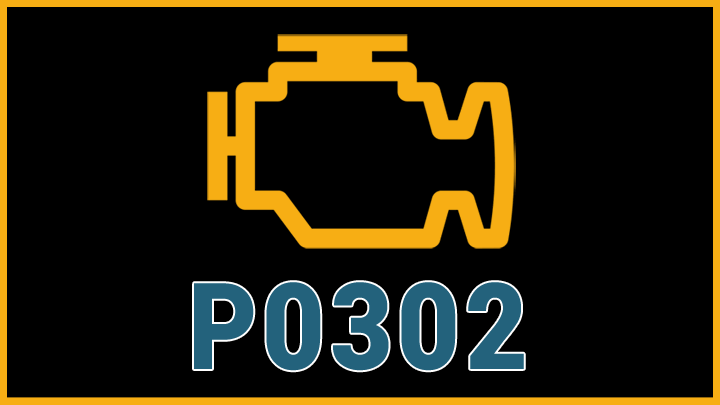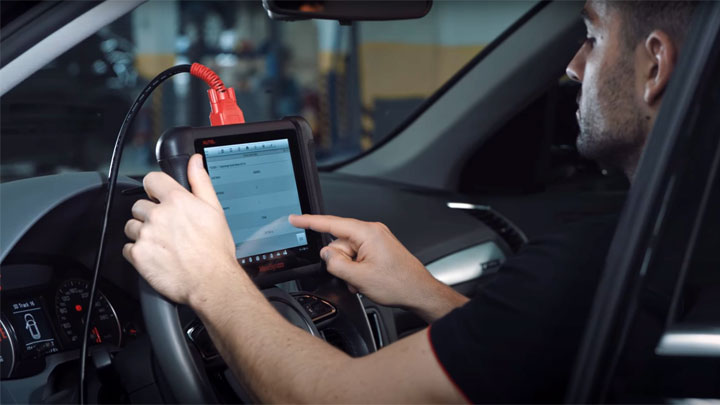P0302 Code (Symptoms, Causes, and How to Fix)
Few automotive issues are as frustrating as an unexpected check engine light, seeming to signal expensive repairs. However, it often indicates only a minor problem that should be resolved promptly.
DTC P0302 is one of the more common codes out there, especially in aging vehicles. Read on to learn about the causes of a P0302 code and how to fix it, the right way.

What Does Code P0302 Mean?
In essence, the onset of a P0302 diagnostic trouble code indicates that a misfire event has been detected on cylinder #2, as listed numerically.
A misfire could be most easily described as a non-existent or incomplete combustion event, which has taken place on a given cylinder, which in this case corresponds with an engine’s second combustion chamber.
While a lack of sufficient spark is often the root cause of a cylinder misfire, a lack of fuel to the affected cylinder can also be to blame. In rare cases, stifled compression can also lead to repetitive misfires on a specific cylinder, though such a condition is most often associated with high mileage engines.
Related: P0300, P0301, P0303, P0304, P0305, P0306, P0307, P0308
Symptoms of Code P0302
Not every engine experiences the same symptoms, in connection with the onset of a P0302 DTC. However, a number of driveability related symptoms can become apparent, when a misfire code of this nature is present.
The following are some of the most common symptoms associated with code P0302.
- Hard start/no start condition
- Rough or erratic idle
- Hesitation or stuttering under load
- Loss of power
- Increased fuel consumption
- Occasional stalling, especially at idle
See Also: Common Engine Misfire Symptoms
Causes of Code P0302

There are a significant number of conditions that can serve as the root cause of a P0302 trouble code. However, virtually all of these conditions center around a lack of spark, fuel, or sufficient compression.
In some cases, electrical or emissions system related failure can also lead to the onset of a P0302 DTC. The following are some of the most common causes of code P0302.
- Faulty #2 spark plug
- Failing #2 spark plug wire
- Inoperable #2 coil pack
- Faulty, dirty, or clogged #2 fuel injector
- Low compression on #2 cylinder
- Cracked or damaged distributor cap
- Excessive rotor button wear
- Engine speed sensor malfunction (crankshaft/camshaft)
- Burnt or damaged valves
- Leaking head gasket
- Vacuum leaks
- Bad EGR valve or clogged EGR passages
- Clogged catalytic converter
- Powertrain control module (PCM) malfunction
Is Code P0302 Serious?
In any event, the root cause of a misfire code should be addressed, diagnosed, and remedied as soon as possible. Because a misfiring engine is experiencing less than optimal combustion on one or more cylinders, engine efficiency will be compromised.
As a result, numerous drivability related issues can arise, even leaving a driver stranded in the most severe of cases.
Perhaps the most significant problem triggered by an unaddressed misfire DTC is possible damage to a vehicle’s catalytic convertor.
Assuming proper fuel delivery to the affected cylinder is maintained, superheating of a catalytic convertor’s core structure can occur as unburnt fuel is sent downstream through a vehicle’s exhaust system. Over time, this typically leads to premature catalytic converter failure.
How to Fix

The following steps can be followed to diagnose and repair P0302 related issues.
#1 – Check Ignition System Components
The vast majority of P0302 diagnostic trouble codes are caused by ignition system component failures. Because of this, one should begin diagnosing such an issue by carefully inspecting all components of this nature.
Start this process by assessing the engine’s number #2 spark plug, looking for damage or improper gap. Likewise, inspect the spark plug wire which corresponds with cylinder #2 for damage or signs of chafing.
If an engine is of a coil-on-plug design, the #2 coil pack should be checked for signs of arcing or other forms of damage. If applicable, an engine’s distributor cap should be checked for signs of water intrusion, and rotor button integrity should be verified.
See Also: Ignition Coil vs Coil Pack (What’s the Difference?)
#2 – Confirm Spark is Present
Assuming that no visual defect has been uncovered during your prior visual inspection, an inline spark tester can be used to verify spark on the affected engine’s #2 cylinder.
#3 – Confirm Fuel Injector Operation
If no ignition system issues have been uncovered during steps #1 and #2, a professional bi-directional scan tool can be used to check for proper fuel delivery at the affected cylinder.
With the vehicle’s ignition in the “On” position, fuel rail pressures can be monitored, while each of the engine’s injectors is actuated via a scan tool. As each injector is actuated, a momentary drop in fuel pressure should be noted.
If no drop in fuel pressure is observed with the actuation of injector #2, further fuel injector diagnostics should be conducted, to rule out any possible underlying electrical issues.
#4 – Check for Additional Trouble Codes
If you have yet to resolve your engine’s P0302 trouble code, further checks should be conducted to ensure that no additional DTCs are present. If any such codes are noted, each should be diagnosed in a bid to restore cylinder #2 combustion efficiency.
All pertinent live streaming data should also be consulted, to rule out possible sensor-related faults.
#5 – Perform Compression Test
If your vehicle’s P0302 fault code remains active, a compression check should be conducted on each of the engine’s cylinders. The resulting compression figures should be compared to uncover any outliers.
Assuming these values are consistent across all cylinders, within 10%-15%, further diagnostics of a vehicle’s PCM (powertrain control module) will be necessary. Consult factory specific service literature from your vehicle’s manufacturer for final diagnosis.
- P0480 Code (Symptoms, Causes, and How to Fix) - Apr 19, 2024
- Car Temperature Gauge Stopped Working? (Here’s Why) - Apr 15, 2024
- Ignition Coil vs Coil Pack (What’s the Difference?) - Apr 8, 2024

Audi tt 2007 reg
Loss of power
Juddering in idle
Had spark plugs changed
Had coil changed
Garage now wants to try new injector on cylinder 2. Any other ideas
Fault codes are
12408
00768
00770
How did they narrow it down to cylinder 2? Those codes are going to take some diagnostics to figure out the underlying problem, so I’d defer to the garage if they think they’re on the right path.
We have 2010 Honda accord and we’ve code 302 and 303 and random misfire. We’re changed 02 censors spark plugs coil wires and fuel injectors and still getting same codes and car sputters and won’t go over 40 mph. What else could be the cause
Could be the timing, could be a bad air fuel ratio caused by a restricted air filter or a dirty sensor. Hard to say without doing some diagnosis.